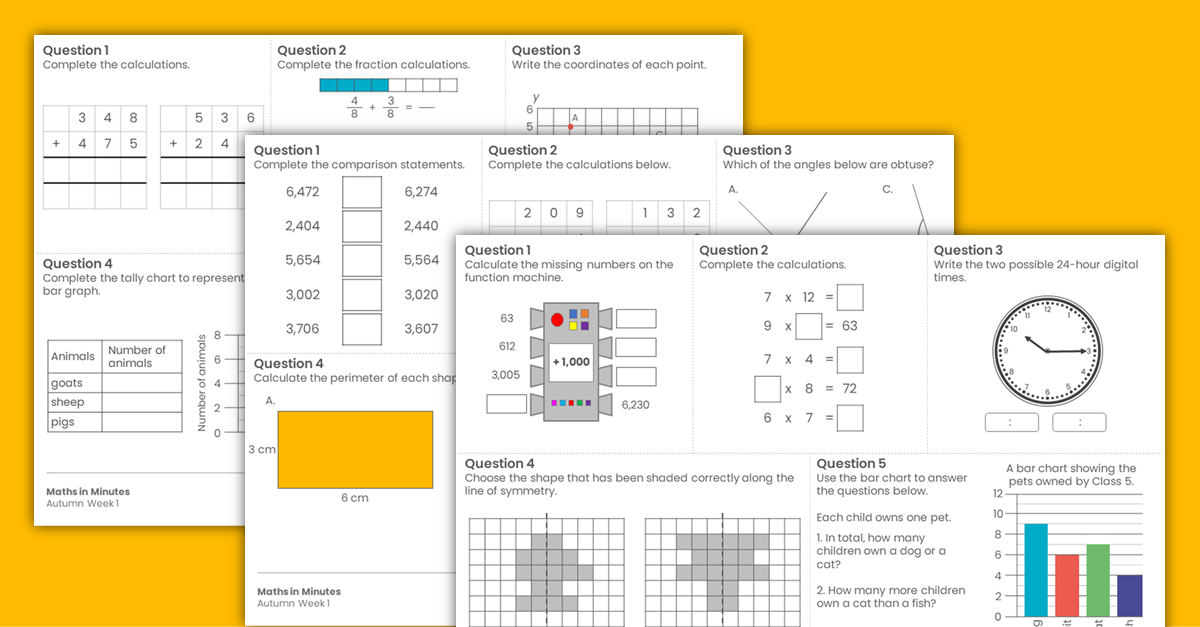Free Year 6 Autumn Week 1 Maths in Minutes
Free Year 6 Autumn Week 1 Maths in Minutes
Give your children the opportunity to consolidate their knowledge and understanding of different areas of maths with this Year 6 Autumn Week 1 Maths in Minutes resource.
With a total of five questions to work through, this resource presents children with the chance to practise applying their skills. It covers content from number, geometry, measure and statistics too.
Ideal for use with your whole class, this activity can be shown on the interactive whiteboard for everyone to access, in turn saving you valuable time, resources, printing and photocopying.
Curriculum Objectives
- Count forwards or backwards in steps of powers of 10 for any given number up to 1,000,000
- Determine the value of each digit in numbers up to 1,000,000
- Add and subtract whole numbers with more than 4 digits, including using formal written methods (columnar addition and subtraction)
- Multiply and divide whole numbers and those involving decimals by 10, 100 and 1,000
- Compare and order fractions whose denominators are all multiples of the same number
- Read and write decimal numbers as fractions [for example, 0.71 = 71/100]
- Measure and calculate the perimeter of composite rectilinear shapes in centimetres and metres
- Calculate and compare the area of rectangles (including squares), and including using standard units, square centimetres (cm2) and square metres (m2) and estimate the area of irregular shapes
- Estimate volume [for example, using 1 cm3 blocks to build cuboids (including cubes)] and capacity [for example, using water]
- Know angles are measured in degrees: estimate and compare acute, obtuse and reflex angles
- Identify angles at a point and one whole turn (total 360), angles at a point on a straight line and 1/2 a turn (total 180 ) and other multiples of 90
- Draw given angles, and measure them in degrees
- Complete, read and interpret information in tables, including timetables
- Solve comparison, sum and difference problems using information presented in a line graph
Not a member? Sign up here.






